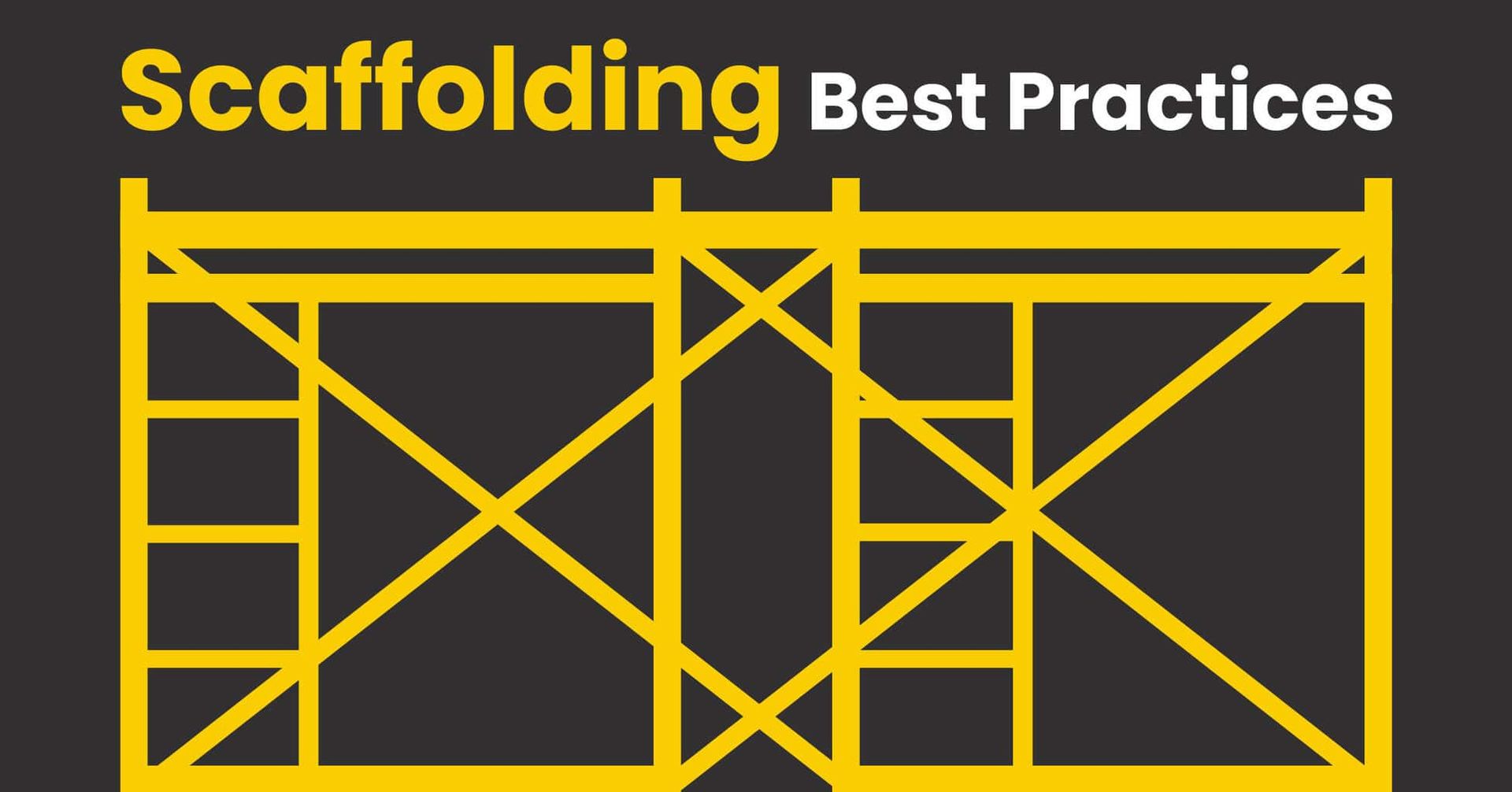Scaffolding Safety & Best Practices

Scaffolding Safety and Best Practices That Save Lives
Scaffolding is an essential tool in the construction and maintenance industry, allowing workers to access heights safely and efficiently. However, without proper safety measures, scaffolding can quickly become a hazardous environment. Let‘s explore the critical safety considerations related to working on scaffolding. We will discuss the proper assembly, inspection, and usage of scaffolds, as well as the importance of fall protection measures. Let’s dive into the world of scaffolding safety to ensure every worker returns home safely.
The Basics of Scaffolding
Scaffolding is a temporary structure used in construction, maintenance, and repair work. It provides a stable platform for workers and materials at elevated heights. To ensure safety, the following considerations should be followed:
1. Proper Assembly
The correct assembly of scaffolding is the foundation of safety. Always follow the manufacturer’s instructions and industry standards during assembly. Ensure that all components are secure, and the scaffold is stable. Unstable scaffolding can lead to accidents, injuries, and fatalities.
2. Inspection
Consistent maintenance inspections of scaffolding is crucial to identify any issues that may compromise safety. Inspect the scaffold before each use and after any significant changes or adverse weather conditions. Look for loose bolts, damaged planks, and any signs of wear and tear that may need to be replaced.
Safe Scaffolding Usage
Once the scaffold is assembled and inspected, proper use is necessary for safety. Here are some best practices for scaffold usage:
1. Training and Certification
Ensure that workers using scaffolding are adequately trained and certified. They should understand the potential hazards and know how to mitigate them. Training should cover scaffold assembly, safe usage, and fall protection measures.
2. Weight Limits
Every scaffold has a weight limit that must not be exceeded. Overloading a scaffold can lead to its collapse, posing a severe risk to workers. Always be aware of the load capacity and distribute weight evenly.
3. Proper Access
Use designated access points, such as ladders or staircases, to get on and off the scaffold. Never climb the cross braces or use makeshift methods to reach the platform.
Fall Protection Measures
Falls from scaffolding are one of the leading causes of injuries and fatalities in the construction industry. Implementing fall protection measures is non-negotiable. Some examples include:
1. Guardrails and Toeboards
Install guardrails and toeboards around all open sides and ends of scaffolding platforms. These barriers prevent workers from accidentally falling off the scaffold.
2. Personal Fall Arrest Systems (PFAS)
In situations where guardrails are not feasible, workers should wear PFAS, which typically consists of a harness, lanyard, and anchor point. PFAS can save lives by stopping a fall before it becomes fatal.
3. Training and Awareness
Workers must be trained in fall protection measures and be aware of the risks associated with working at heights. It is recommended to retrain every two years, or even sooner if any of the following apply: Changes in the workplace, types of fall protection systems/equipment that would render previous training obsolete. Or if there are weaknesses in an employee’s knowledge of the equipment or fall protection systems.
Statistics and Recent Trends*
To emphasize the importance of scaffolding safety, let us look at some recent statistics and trends:
- According to OSHA, nearly 65% of construction workers work on scaffolds frequently.
- Scaffold-related accidents account for a significant portion of construction fatalities.
- The implementation of proper safety measures and training has been shown to reduce scaffold-related accidents by up to 50%.
- For the past 13 years, violations in Fall Protection has been on OSHAs yearly top 10 Most Frequently Cited Standards list.
Scaffolding is a vital tool in the construction and maintenance industry, but its use comes with inherent risks. Proper assembly, inspection, and usage are essential for the safety of workers. Fall protection measures, such as guardrails and personal fall arrest systems, are non-negotiable when working on scaffolds.
By following these best practices and staying up to date with safety regulations, we can prevent accidents, save lives, and ensure that every worker returns home safely. Remember, safety should always be the top priority on any construction site.
Safety is everyone’s responsibility. Whether you are a construction worker, a supervisor, or a project manager, commit to prioritizing scaffolding safety. With the help of YellowBird you can be sure that all workers are adequately trained and equipped with the knowledge and tools to work safely on scaffolds. Safety saves lives, and it is a commitment we must all uphold.
Don’t Just Build Up — Build Safe. Ensure Scaffolding Safety with YellowBird.
Scaffolding is essential — but one misstep can be fatal . With fall protection violations consistently ranking in OSHA’s top 10 citations, the stakes couldn’t be higher. It’s not just about compliance — it’s about lives.
YellowBird connects you with experienced, OSHA-savvy professionals who provide on-site or virtual scaffolding safety training, fall protection refreshers, and certification programs that stick. Our safety Pros assess your setup, inspect your scaffolds, and identify real-world hazards before OSHA does. From weight capacity to PFAS compliance, we’ve got you covered.
Empowered teams work safer. And safe teams get the job done — without shutdowns, fines, or lawsuits. Find a scaffolding safety expert from YellowBird today!


